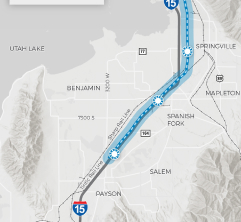Resources
Downloads Resources
Project Information
- FrontRunner 2X Overview Fact Page | October 24, 2025
- UTA Transit Noise Policy Fact Page | September 24, 2025
- UTA Transit Vibration Policy Fact Page | September 30, 2025
Federal Resources
Planning Resources
- FrontRunner Forward Planning and Environmental Linkage Study | May 30, 2025
- UTA Moves 2050
- Mountainland Association of Governments TransPlan 50
- Wasatch Front Regional Council Central Corridor Study
- Wasatch Choice Vision Map
Environmental Review Resources
-
South of Draper Section and New Station (In Draper City & Bluffdale City)
-
North of Orem Section (In Vineyard City & Orem City)
-
FrontRunner 2X Corridor Level Analysis
Related Projects
Stay Engaged with Us
Sign up for email updates and reach out to a team member with any comments or questions.
FAQs & Resources
We’ve got the answers to your most frequently asked questions and resources you can download to learn more about FrontRunner 2X.

